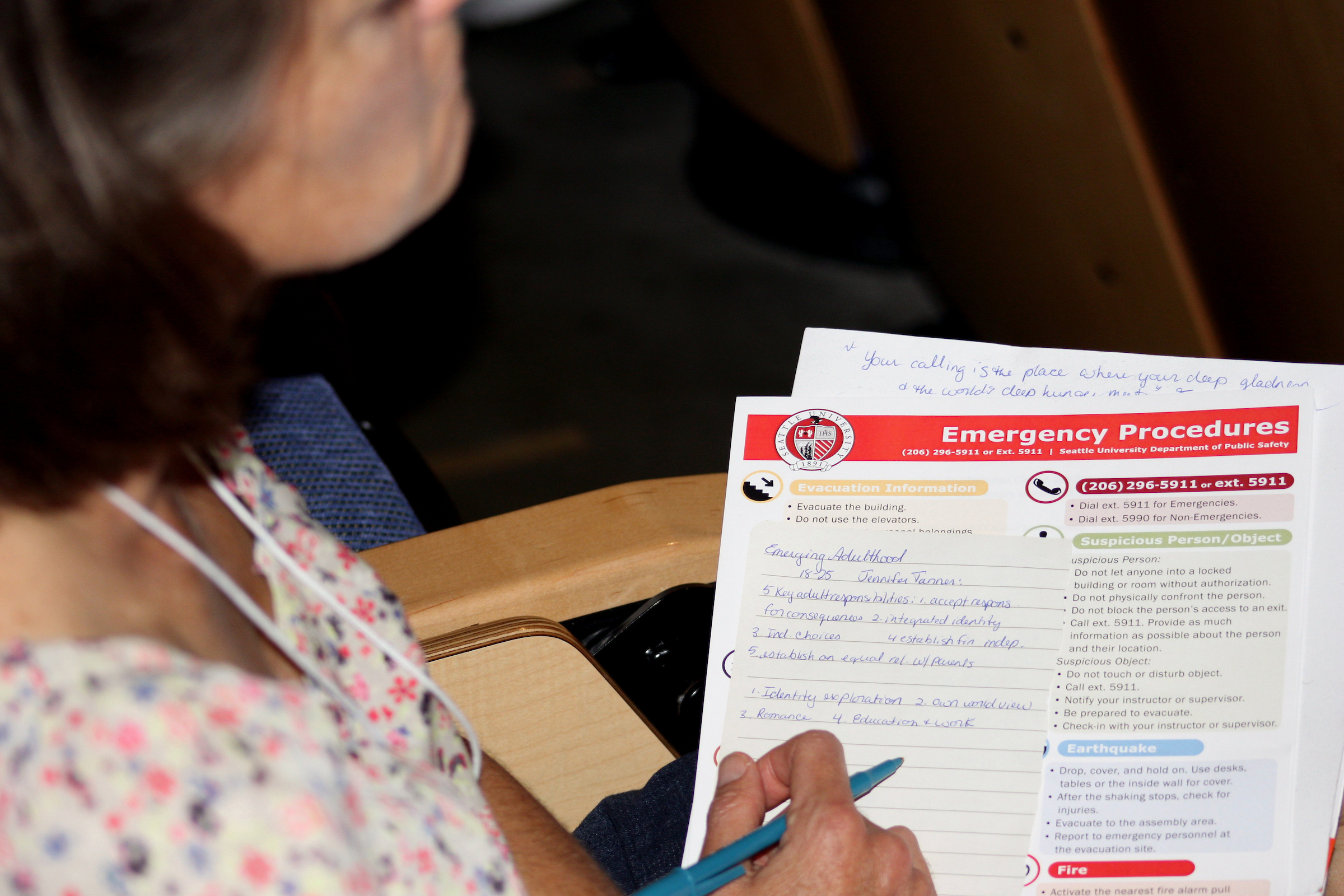Emergency Procedures
Use the tabs below to learn about Seattle University's emergency procedures.
Emergency Procedures
REPORTING EMERGENCIES
What to Do
To report an off-campus emergency, dial 911. If the off-campus emergency involves a university activity, make a report to Public Safety when the emergency is over. To report an on-campus emergency, call Public Safety at (206) 296-5911 or use one of the 'Blue Light' emergency phones located at major intersections around campus.
When Calling:
Say, “This is an emergency,” and give the dispatcher the following information:
- Your location.
- The nature of the emergency.
- Your name.
- The phone number where best to reach you.
- Stay on the line until you are sure no further information is required.
- After notifying emergency personnel, notify building staff.
- Watch for the arrival of emergency personnel and direct them to the appropriate location.
In the case of the following emergencies, contact our 24-hour emergency line at (206) 296-5911:
- Fire
- Medical emergencies
- Crime in progress
- Power outage
Suspicious Activity
If you see someone or something suspicious on or near campus, please contact our 24-hour emergency (206) 296-5911. Be sure to report something suspicious even if you are unsure what the person or persons are doing. Officers would much rather respond to a call regarding a suspicious person and have it turn up to be nothing, then not know about a suspicious activity and have it turn into a potentially dangerous situation.
To inform the responding units, there are a few items of information the officer on the line may ask from you, including:
- Where the persons are/where the activity is taking place.
- What they are doing.
- How many people there are.
- What they look like.
ARMED INTRUDER
What to Do
- RUN.HIDE. FIGHT.
- If you suspect an intruder is on campus, call Public Safety at (206) 296-5911 or use one of the 'Blue Light' emergency phones located around campus and provide the information requested. Stay on the line until told to hang up.
- If you suspect an armed intruder is nearby, try to escape and leave campus, or find a safe location to hide.
- If outdoors, find refuge in a nearby building.
- When indoors, remain in your room or office. Lock the door if you are able. If you cannot lock the door, close it and pile furniture or other large objects in front of it. Turn out lights and hide under furniture, away from windows and adjacent to a solid wall.
- Remain calm and quiet.
- Wait for police to arrive.
- If instructed by authorities to evacuate a building or the campus grounds, follow directions exactly.
- If you witness any hostile acts or injuries, contact the authorities as soon as it is safe to do so.
What Not to Do
- Don’t leave your room to try to see what's happening.
- Don’t confront or try to apprehend the intruder.
- Don’t assume that someone else has called Public Safety or 911.
BOMB THREATS
What to Do
Bomb threats are most commonly received by phone. A person receiving a telephoned bomb threat should:
- Keep the caller on the line as long as possible.
- Write down all the information obtained. Ideally, take notes when the caller is talking. Refrain from speaking to anyone until your notes are complete.
- Notify Public Safety at (206) 296-5911.
For other types of bomb or suspicious situations:
- Check your work area for suspicious packages or bags; if found, don’t touch. Report any suspicious objects to Public Safety.
- Evacuate immediately if a bomb is discovered before authorities arrive.
What Not to Do
- Don’t assume a bomb threat is a prank. Assume it is real.
- Don’t touch, move or cover a suspected bomb. Note its description, exact location and report it to authorities.
- Don’t use two-way radios or cell phones in the area.
We're here to help
Officer coverage 24/7
1313 E. Columbia Building
Business office: Mon-Thurs, 8:30am-4:00pm
